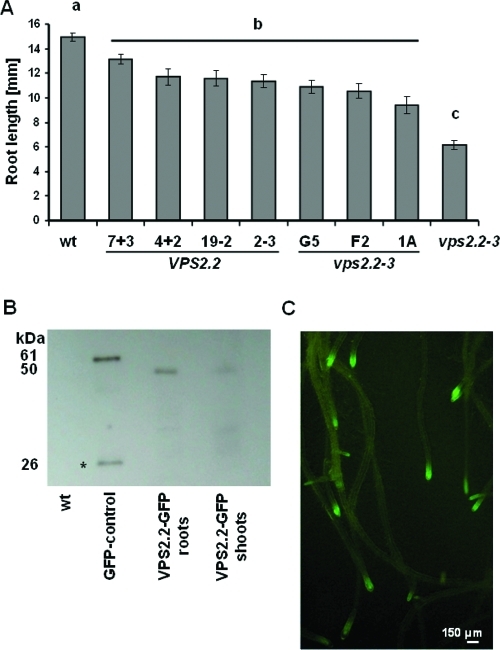Figure 1.
AtVPS2.2-GFP complements vps2.2–3 phenotypes and is predominantly expressed in root meristems. (A) Wildtype and vps2.2–3 mutants expressing AtVPS2.2-GFP develop significantly longer roots than untransformed vps2.2–3, substantiating the functionality of the construct (pab < 4.4 × 10–5 for all comparison to vps2.2–3). Yet all transformants develop shorter roots than untransformed wildtype seedlings (pbc < 0.004). Root lengths were determined of at least 20 seedlings 7 days after germination on MS medium supplemented with 4.5% sucrose. The significance was calculated by students t-tests. (B) Stability and prevalent root expression of the AtVPS2.2-GFP fusion protein and the specificity of the GFP-antibody was determined by Western blot analyses loading 75 μg total proteins of wildtype root (wt), of seedlings expressing an unstable GFP-fusion protein (GFP-control), roots and shoot extracts of wildtype seedlings expressing AtVPS2.2-GFP. While in the unstable GFP-control extract a degradation product is detectable (star, 26 kD) the AtVPS2.2-GFP fusions (50 kD) are stable. (C) Roots of 14 days old seedlings expressing AtVPS2.2-GFP. AtVPS2.2-GFP is predominantly expressed in root meristems.

